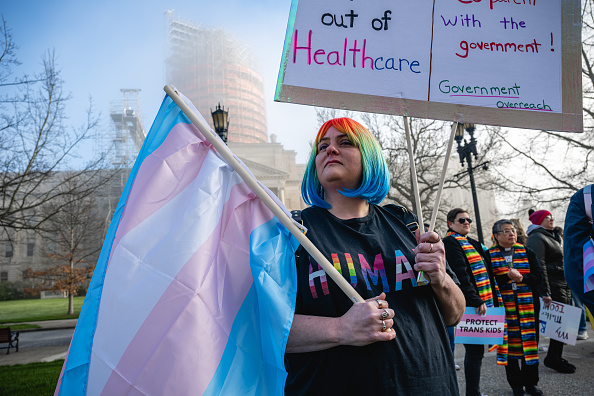The American Medical Association’s new draft style guide on gender-related language promotes activist terminology which downplays sex differences in medical literature.
The guide, which is still in draft form and must go through a public comment and approval process before it becomes official, suggests the organisation has no plans to pivot away from its longstanding support for cross-sex medical interventions to treat gender-related distress, including for minors. It expands on the AMA’s previous support for what it calls “inclusive language”, such as its suggestion that researchers use the term “sex assigned at birth” rather than “sex”.
GLAAD, an LGBT activist group that staunchly opposes legal limits on child medical transitions and has pushed social media companies to censor discussion of the procedures, is referenced seven times in the new guide. The AAP repeats the group’s definitions of terms such as “queer” and “nonbinary”. When explaining that the term “homosexual” should be avoided in favour of “gay” or “men who have sex with men”, the AMA guidance again cites GLAAD.
“Gender” is a “social construct”, according to the document’s 300-word definition of the term. The definition notes that “all cultures do not use a binary masculine-feminine system.” It also cites a World Health Organization definition, which reports that gender “is hierarchical and produces inequalities that intersect with social and economic inequalities”.
Authors and editors of medical research are encouraged to use gender-neutral terminology in the context of pregnancy, childbirth and infant care. While “chestfeeding” should generally only be used when transgender people are involved, other gender-neutral terms are encouraged in all contexts, including “pregnant people”, “persons with childbearing potential”, and “nonpregnant partners”. The AMA guide does endorse some limits on activist language. For instance, “people with uteruses” and other “overly clinical” terms are discouraged.
The AMA boasts of more than 700,000 members and publishes the highly influential Journal of the American Medical Association. Its support for cross-sex treatments for minors, and its opposition to legislation restricting the practice, has helped form the perception in the US that there is a consensus within the medical community on the matter, a favourite talking point among activists. While there is considerable debate within the medical community on the subject, most major medical institutions formally endorse “gender-affirming care” for children, a phenomenon that opponents attribute to ideological capture by a vocal minority of members.
The AMA has been contacted for comment.











Join the discussion
Join like minded readers that support our journalism by becoming a paid subscriber
To join the discussion in the comments, become a paid subscriber.
Join like minded readers that support our journalism, read unlimited articles and enjoy other subscriber-only benefits.
Subscribe